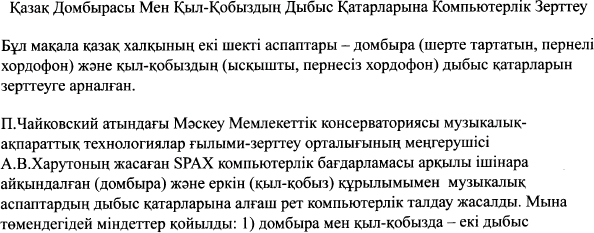Published online by Cambridge University Press: 06 December 2018
This article addresses the pitches, intervals, and scales of the dombra and kyl-kobyz, the most prominent two-stringed lutes of the Kazakh people (see figure 1). The dombra has tied-on frets and is plucked; in the past the strings were made from gut, but now they are made from artificial string (usually fishing line). The kyl-kobyz is a bowed, fretless lute with horsehair strings. Both instruments have an important place in the music culture of the Kazakh people. The dombra is one of the most important cultural symbols of Kazakhstan. In the lives of the Kazakh nomads of the past and present, no family celebration was complete without it, and today it is featured at public holiday and observances. The tones of the dombra— warm and velvety, like the sounds of their native language—are familiar to every Kazakh from childhood. Whereas the dombra is ubiquitous in the Republic of Kazakhstan, the sphere of the kobyz is more limited. It belongs to the category of sacred instruments, and in the past it was the province of baksy (the Kazakh term for healers and shamans). As a consequence, during the Soviet era the instrument was forgotten for ideological reasons. Only since the 1960s and 1970s has the kyl-kobyz tradition been revived.
